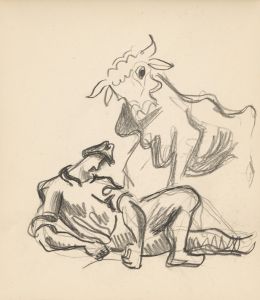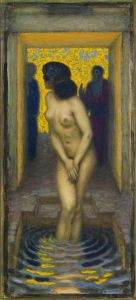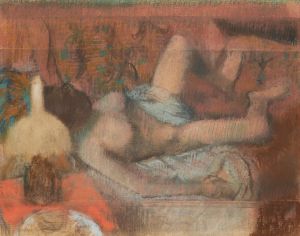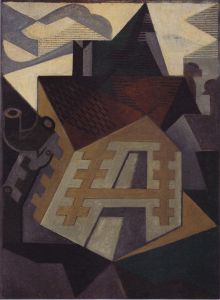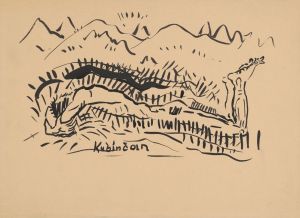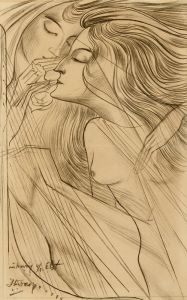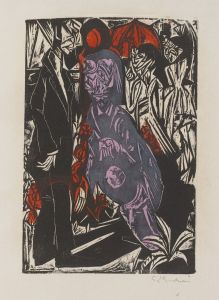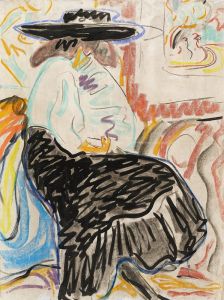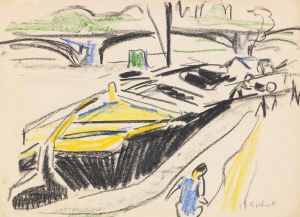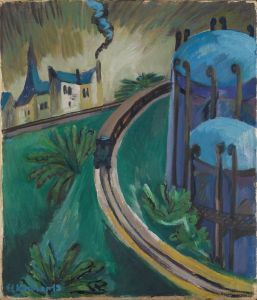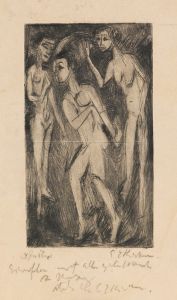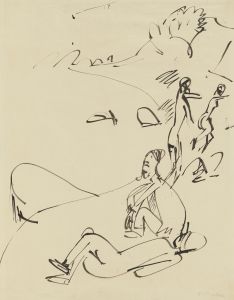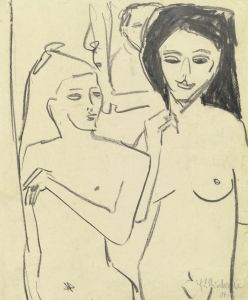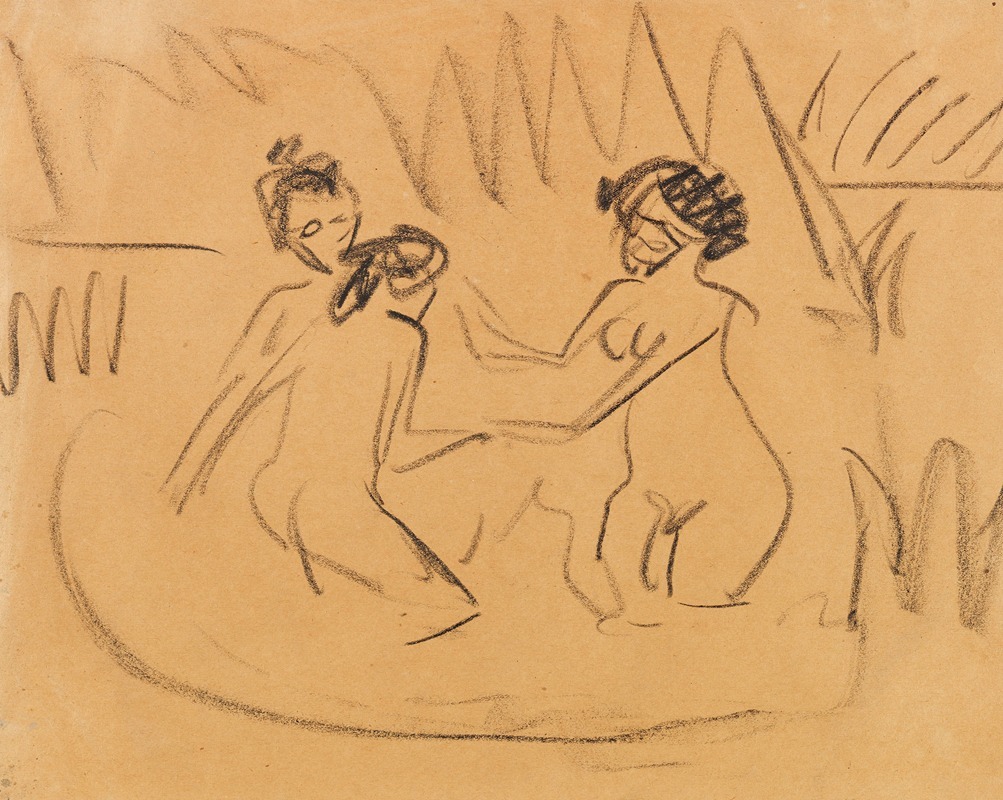
Drei badende Akte an den Moritzburger Seen
A hand-painted replica of Ernst Ludwig Kirchner’s masterpiece Drei badende Akte an den Moritzburger Seen, meticulously crafted by professional artists to capture the true essence of the original. Each piece is created with museum-quality canvas and rare mineral pigments, carefully painted by experienced artists with delicate brushstrokes and rich, layered colors to perfectly recreate the texture of the original artwork. Unlike machine-printed reproductions, this hand-painted version brings the painting to life, infused with the artist’s emotions and skill in every stroke. Whether for personal collection or home decoration, it instantly elevates the artistic atmosphere of any space.
"Drei badende Akte an den Moritzburger Seen" (Three Bathing Nudes at the Moritzburg Lakes) is a painting by the German expressionist artist Ernst Ludwig Kirchner, created in 1910. Kirchner was a founding member of the artist group Die Brücke (The Bridge), which played a pivotal role in the development of Expressionism in early 20th-century Germany. The group sought to create a new artistic language that bridged traditional academic art and modernist experimentation.
The painting depicts three nude women bathing in the natural setting of the Moritzburg Lakes, located near Dresden, Germany. This location was a frequent retreat for Kirchner and other members of Die Brücke, who often sought inspiration from nature and the human form in their work. The Moritzburg Lakes provided a serene and unspoiled environment that contrasted sharply with the industrialized urban settings of the time, allowing the artists to explore themes of freedom, natural beauty, and the primal aspects of human existence.
Kirchner's style in "Drei badende Akte an den Moritzburger Seen" is characterized by bold, expressive brushstrokes and a vibrant color palette, typical of his work during this period. The figures are rendered with a sense of movement and fluidity, emphasizing the dynamic interaction between the human body and the natural environment. The use of exaggerated forms and intense colors reflects Kirchner's interest in conveying emotional and psychological states rather than adhering to realistic representation.
The painting also exemplifies the influence of non-Western art on Kirchner and his contemporaries. The simplified forms and strong outlines of the figures show the impact of African and Oceanic art, which Kirchner admired for its perceived authenticity and directness. This interest in so-called "primitive" art was part of a broader trend among European modernists, who sought to break away from the conventions of Western art and explore new aesthetic possibilities.
"Drei badende Akte an den Moritzburger Seen" is significant not only for its artistic qualities but also for its reflection of the social and cultural currents of its time. The depiction of nude figures in a natural setting can be seen as a statement of liberation from the constraints of bourgeois society and a celebration of a more instinctual, unmediated way of life. This theme of return to nature and the exploration of the human condition was central to the ethos of Die Brücke and the broader Expressionist movement.
Today, "Drei badende Akte an den Moritzburger Seen" is recognized as an important work in Kirchner's oeuvre and a key example of German Expressionism. It is held in high regard for its innovative approach to form and color, as well as its ability to convey complex emotional and psychological states through visual means. The painting is housed in the Staatliche Museen zu Berlin, where it continues to be studied and appreciated by art historians and the public alike.





